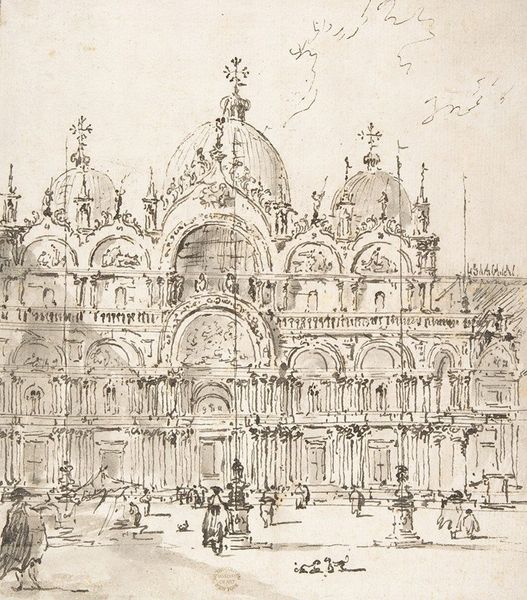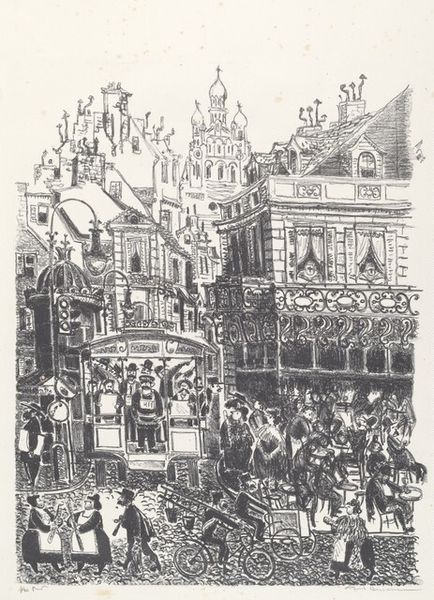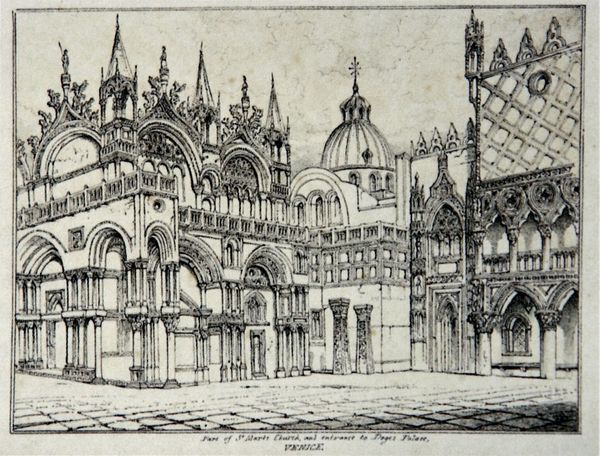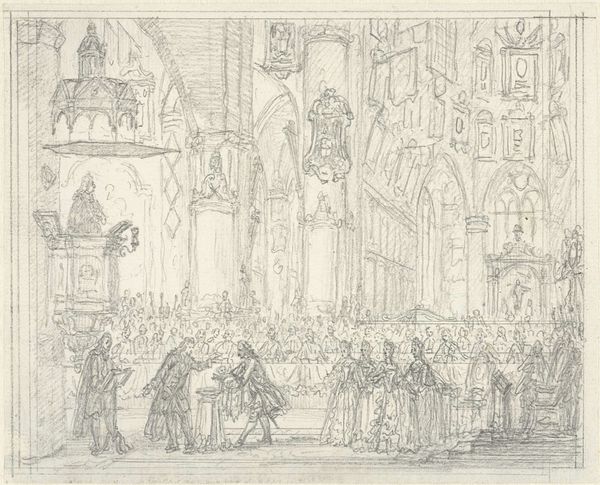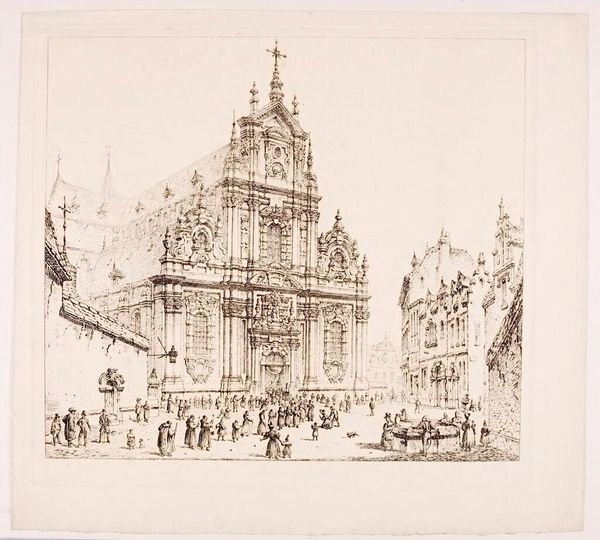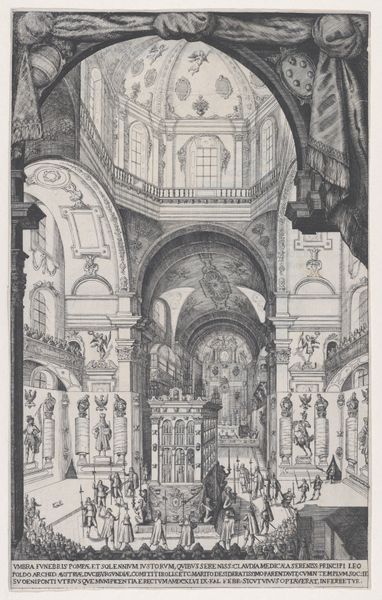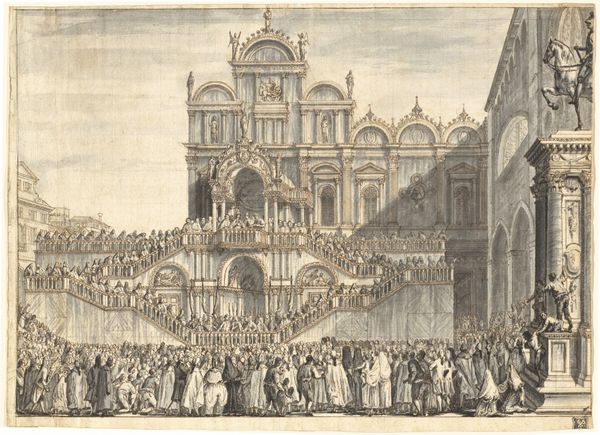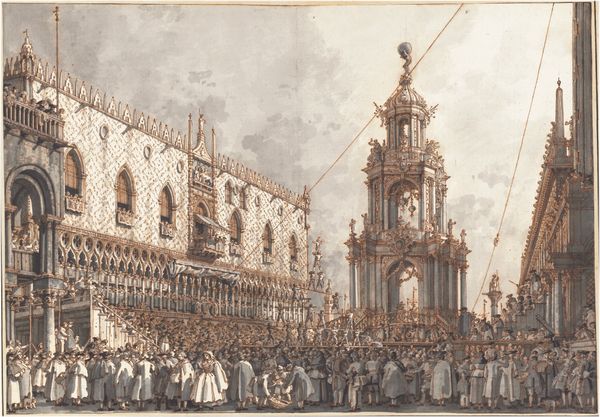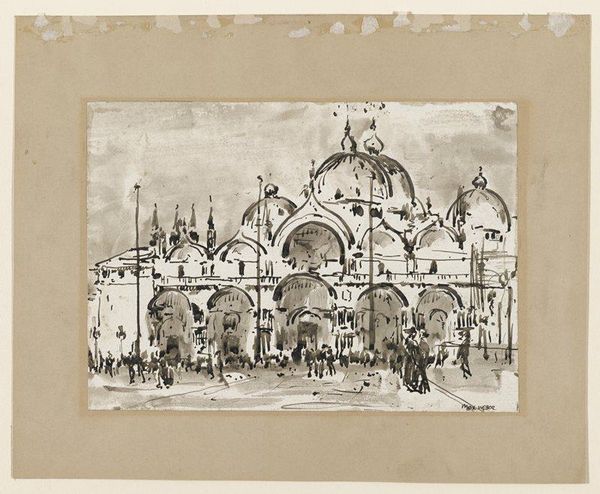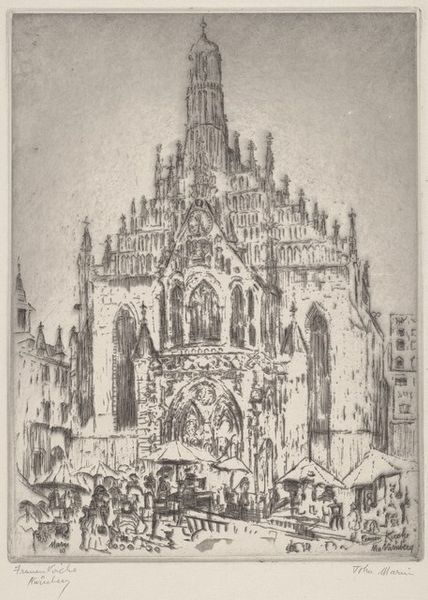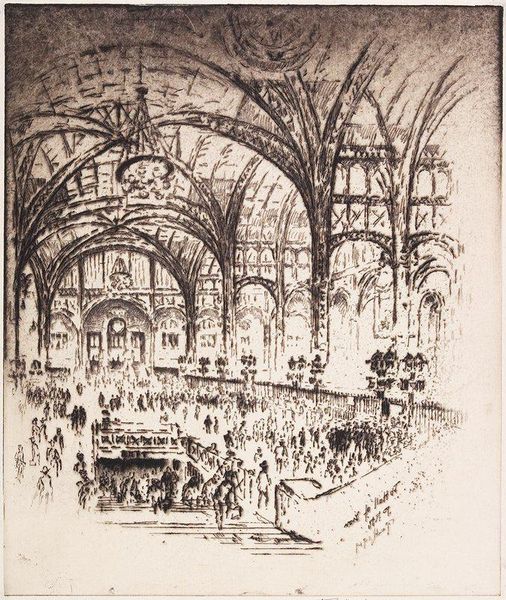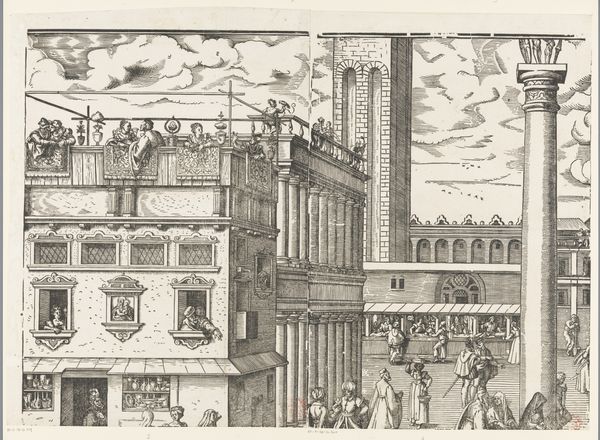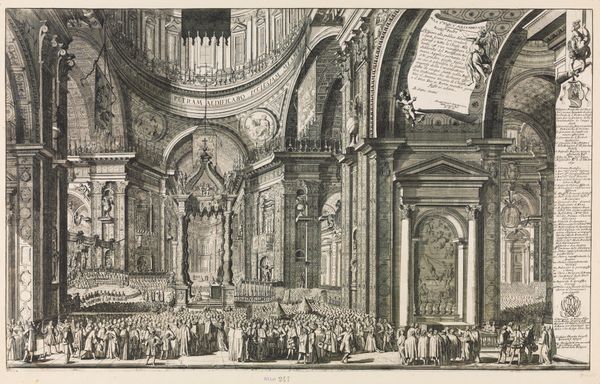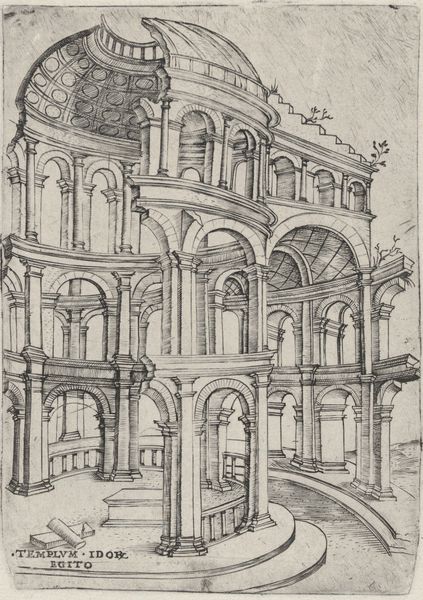
drawing, print, ink, pen
#
drawing
#
neat line work
# print
#
pen illustration
#
pen sketch
#
line art
#
ink line art
#
linework heavy
#
ink
#
pen-ink sketch
#
thin linework
#
pen work
#
pen
#
cityscape
#
intricate and detailed
Copyright: National Gallery of Art: CC0 1.0
Curator: Before us hangs Alfred Bendiner's "St. Mark's, Venice," created in 1963. This detailed print primarily employs ink to render the iconic cityscape. Editor: My initial impression is of a restless energy, despite the classical subject. The sheer volume of intricate linework gives it a frenetic quality. It almost feels overwhelming. Curator: Indeed. Bendiner's perspective emphasizes the grandeur of the Basilica, positioning it within the bustling Piazza San Marco. You can sense the cultural significance through his focused lens. Editor: And I find the figures in the foreground incredibly compelling. They aren’t just passive observers; they are active participants, blurring the lines between the sacred and the everyday. Their presence also brings a different historical viewpoint when looking at how power, especially religious, affects the citizens of Venice. Curator: It's a dynamic tension. Bendiner was, after all, trained as an architect, and then he chose to focus on caricature and art. His technical skill shines through in the precision of the architectural rendering, yet his choice to depict Venice speaks to the post-war movement from traditional values toward more social awareness. Editor: It certainly challenges conventional representations of Venice, where the city is often romanticized or exoticized. Bendiner brings a sense of immediacy, hinting at the social and political complexities embedded within this iconic site. We must consider Venice not merely as a floating city, but a nexus of social change and the complicated relationship of history, religion and statecraft. Curator: Precisely. I'm also struck by how this work reflects the social mood in 1963, at the intersection of tradition and modernity, when it was created. What resonates with me is that Bendiner uses traditional method to invite the contemporary to consider the future. Editor: It leaves me contemplating how art can engage with complex histories, challenging romanticized narratives and inspiring critical dialogues about social agency, historical burdens, and civic engagement. Curator: Yes, ultimately this print becomes a thoughtful document of time and shifting societal views of the era. Editor: Indeed, offering insight not just on the city, but also on those experiencing it.
Comments
No comments
Be the first to comment and join the conversation on the ultimate creative platform.
